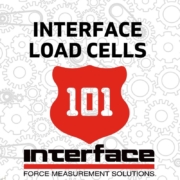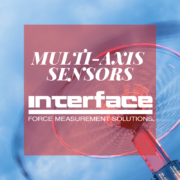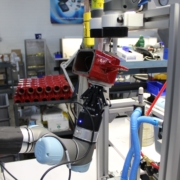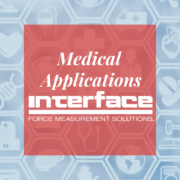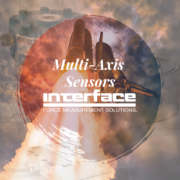Interface Sensors Used for Development and Testing of Surgical Robotics
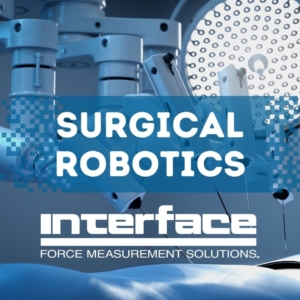 Electro-mechanical and software advancements in the medical device and healthcare industry have made all kinds of surgical robotics a reality. Manufacturers and design engineers of these robots come to Interface during the stages of research and development, product engineering and refinement, and testing to perfect surgical use cases. The sensor technologies we provide are preferred in these processes and in final integration due to the fact these devices are highly regulated and require the utmost in accuracy and reliability.
Electro-mechanical and software advancements in the medical device and healthcare industry have made all kinds of surgical robotics a reality. Manufacturers and design engineers of these robots come to Interface during the stages of research and development, product engineering and refinement, and testing to perfect surgical use cases. The sensor technologies we provide are preferred in these processes and in final integration due to the fact these devices are highly regulated and require the utmost in accuracy and reliability.
The types of surgeries currently being performed with robotics include what were once considered invasive and a higher risk of failure such as coronary bypass, removing cancer tissue, transplants, laser incisions, and more. With surgical robotics, the medical professionals rely on precision to perform these surgeries with as minimal invasion as possible.
The product development process for surgical robotics is extremely meticulous and requires a wide variety of tests to confirm the accuracy of the product. One of the key components to testing in this field is force measurement. As you can imagine, force plays a massive role in surgical robotics. Every action performed needs to be forced tested to ensure that whatever the surgical task, the robot is doing it with precision.
For surgical robotics, minute forces need to be measured because they are working with highly fragile subjects within a human body. To measure these tiny forces, Interface offers a variety of Interface Mini™ Solutions. Interface Mini Load Cells are used for light touch, light weight, or for less space. Our miniature load cells provide exceedingly accurate measurements similar to our full-size load cells with proprietary alloy strain gages. They are used in R&D, test and for OEM use in robot components.
All our miniature beam load cells, load cell load buttons, load washer, miniature tension force load cells, S-type load cells, and sealed stainless steel load cells are commonly used based on their capacity and designs. A variety of our load cells can be used in an off-the-shelf application. Our engineers can also work with you to design custom load cells to fit your exact needs, which is common in robotics.
Interface recently developed an application note to outline how force measurement can be used in testing force feedback using a combination of load cells, torque transducer and data acquisition device on a robotic surgical device.
Robotic Surgery Force Feedback
A biomechanical medical company wanted to test the force, torque, and tactile feedback from their robotic arm for invasive surgery. The surgeon’s movements are mirrored by the robotic arm during surgery, and it was essential all haptic force feedback is measured to ensure safety during invasive surgery. A number of Interface’s force and torque measurement products were suggested for this robotic arm. These includes our load button, S-types, Mini overload protected torque transducers and DAQ instrumentation. Included below are the roles of each device:
- ConvexBT Load Button Load Cell: Used to measure the force of specific surgical tools themselves, such as clamps and pinchers.
- SMTM Micro S-Type Load Cell: Mounted at the tool attachment mechanism, can measure the exact forces applied to surgical tools.
- MRTP Miniature Overload Protected Flange Style Reaction Torque Transducer: Mounted between the robot arm’s motor and joint, to measure the torque of the arm’s movements.
- BX8 8-Channel Data Acquisition System and Amplifier: Results from all three force sensors can be viewed and recorded using the BX8.
Each one of Interface’s load cells or torque transducers played a part in the ensuring the safety and functionality of robotic arms during invasive surgery. The force feedback that was measured from the robotic arm ensured that the robot used the perfect amount of force when using surgical tools that create incisions during surgeries. It also measured the torque being produced, ensuring the robot arm was moving smoothly and at the right speeds. Read the application note for this surgical robot here.
This is just one example of Interface’s work in robotics, and surgical robotics specifically. There are a growing number of devices used in special, precision surgeries that utilize force to perform its task.
Additional Resources Related to Medical, Healthcare and Robotics
Spotlighting Medical Device and Healthcare Solutions
Medical and Healthcare Brochure
Force Solutions for Medical Tablet Forming Machines
Interface OEM Solutions Process
6-Axis Force Plate Robotic Arm App Note
Force Measurement Solutions for Advanced Manufacturing Robotics
